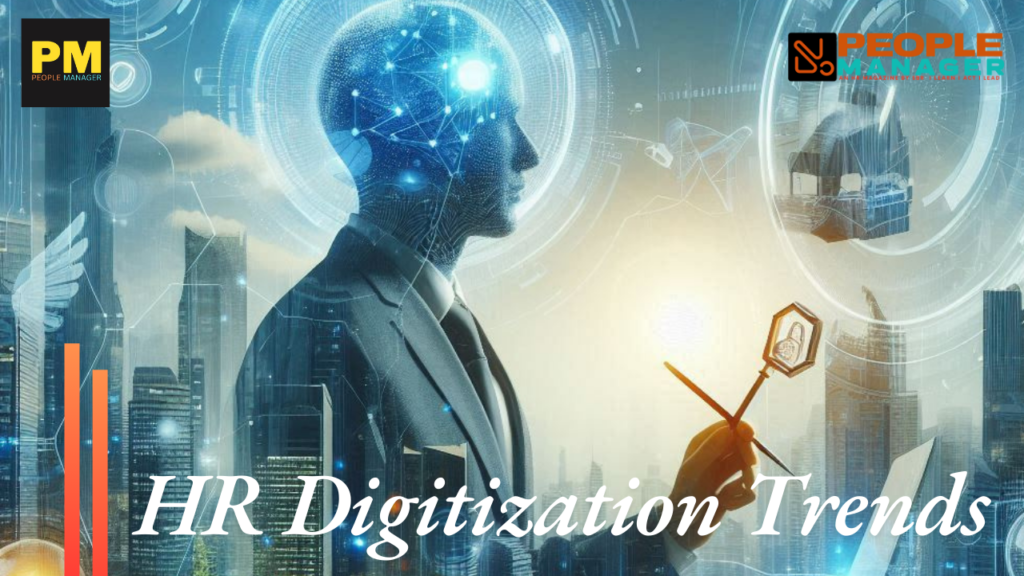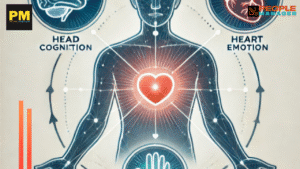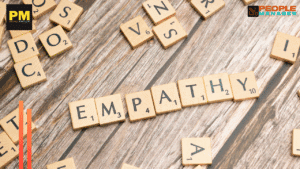Digital HR Trends -2025 : How HCM Automation is shaping the future of work
Digital change and employee satisfaction must go hand in hand. According to a survey, 96% of Indian workers are dissatisfied with the professional development opportunities provided by their companies. 87% say organizations should do more to address their needs- Sudeep George

HCM is not a new or emerging tool in the business landscape. For years, companies across the globe are investing in to streamline their operations and improve employee experience at work. But what’s pertinent to note is that many companies are still using legacy HCM solutions that are hindering employee engagement and eventually slowing down HR operations. Such a situation presents a clear need for change. In fact, according to a report by Gartner, 76% of HR leaders believe that organizations that don’t implement AI tools in the next 1-2 years may get outshined by the competition. In other words, unacceptance of modern technology carries a significant risk for businesses.
But before moving further, let’s first understand what HCM actually is. In simple words, it’s integrated software that automates various HR processes such as job posting, recruitment, onboarding, payroll, performance management, and much more. The modern-day HCM platforms also provide the tools to cater to the more human-centric side of HR management, like improving employee experience, increasing employee engagement, improving employee motivation through gamifications, rewards and recognition, etc.
With an HCM platform in place, HR teams can access people data and analytics in real time and thus make informed people management decisions faster. It results in ensuring that employees feel heard, happy, and motivated.
HR chatbots would be a great example in this context. These conversational AI bots can assist new employees with onboarding tasks and answer routine employee-related questions in a more intuitive, personal, and helpful way. Best of all, these bots are available 24/7, which means employees can clarify their queries without waiting for HR to meet and discuss in person. HRs, on the other hand, will be, therefore, free from such routine doubts and have more bandwidth to work on more complex issues and situations, which can’t be resolved without the human touch.
Digital transformation and employee satisfaction must go hand in hand
While it is pivotal for companies to go digital to maintain their competency, they must ensure that the overall employee experience is always improving and not declining due to this transition. Because when a company adopts new technologies, it naturally disrupts the existing work processes. And, we can’t ignore the fact that factors like mental health, work-life balance, and flexibility have become top priorities for many employees post pandemic. As per a survey, 96% of the Indian workforce are not happy with the kind of career support their employers offer. And 87% believe that organizations should do more to meet their needs.
It is, therefore, crucial for employers to ensure that the ongoing tech transition supports these key aspects and that employees get a more trusted environment at work. To make this possible, leaders should focus on encouraging two-way communication between employers and their people, seeking regular feedback from employees to improve their employee experience strategies. These steps are essential, especially during this time with more and more people continuing to work remotely or in a hybrid setup. This is the time when issues like miscommunications are highly probable due to a lack of in-person interactions with managers and co-workers. To prevent such situations, seamless collaboration between co-workers is a must, and this can be achieved with holistic HCM solutions.
HCM’s role in modern retention strategies
Employee retention remains another significant concern, with 93% of organizations citing it as a challenge, according to LinkedIn’s 2023 Workplace Learning Report. The report identifies a clear solution, 94% of employees believe access to development opportunities plays a critical role in their decision to stay. By fostering growth and enhancing skills, organizations can cultivate loyalty and engagement, reducing turnover and its associated costs.
HCM can transform employee development by offering tailored solutions that align with individual goals. It can create interactive simulations for practical skill-building and dynamically adjust learning paths based on real-time progress. This personalized approach not only addresses skill gaps effectively but also keeps employees engaged and motivated. By integrating HCM into their training strategies, organizations can not only tackle retention issues but also prepare their workforce for future industry demands.
Improved compliance
Keeping up with ever-changing employment laws and regulations can be a real challenge. That’s where HCM software comes in to simplify the process. It takes the hassle out of compliance by automating things like tracking employee hours, leave, and certifications. Plus, it can quickly generate reports to show you’re in line with labor laws, which means fewer legal headaches down the road. On top of that, it keeps employee records accurate and ensures all your documentation is audit-ready. In short, it saves you time, cuts down on stress, and keeps your workforce compliant.
Engaged and Productive Workforce
HCM software makes it easier to build a strong, engaged team by offering tools for talent acquisition, workforce planning, and performance management. These features help businesses attract the right people, spot skill gaps, and promote a culture of ongoing learning and growth. When employees have opportunities to develop their skills, they’re more likely to feel motivated and engaged in their work. This leads to better productivity, higher job satisfaction, and, in the long run, improved employee retention.
Many HCM platforms adopt the style of social networking sites to promote engagement among employees. These platforms enable managers to appreciate the hard work of their team members publicly and also allow their peers to comment on such achievements. In this way, HCM platform fulfil the human need of recognition to create a more engaged workforce.
There are other platforms that leverage the power of gamification through tools like leaderboards, point systems, etc to motivate employees to achieve higher goals.
Harnessing predictive analytics to future-proof your workforce
Large organizations generate huge amounts of workforce data, and predictive analytics can make that data work for them by helping forecast future staffing needs. Despite its potential, though, a Deloitte report reveals that only 28% of businesses are using people analytics, and just 4% have fully integrated it into their operations.
By using predictive analytics tools, companies can get ahead of issues like employee turnover. These tools dive into performance metrics, employee engagement levels, and past attrition trends to help predict who might be at risk of leaving. This allows companies to take proactive steps to address concerns early, improving retention and reducing the risk of losing valuable talent.
These tools also play a big role in workforce planning by identifying gaps in skills and highlighting training needs. By offering career development opportunities, organizations can ensure their employees continue to grow, stay motivated, and feel more committed to their roles. In the end, it’s all about building a stronger, more engaged workforce.
AI and Automation in HCM
As we move further into the digital age, the role of AI and automation in Human Capital Management (HCM) is becoming even more crucial. The integration of these technologies is reshaping the way HR departments manage their workforce and helping organizations stay ahead in a rapidly evolving business environment.
AI-driven tools can help HR teams make smarter, data-backed decisions by processing large volumes of employee data and offering actionable insights. For instance, AI can streamline recruitment by analyzing candidate profiles against a company’s existing employee data to find the best match. Beyond that, generative AI models can also assist in crafting personalized learning pathways for employees, ensuring that development efforts are tailored to each individual’s needs. This helps create a more dynamic workforce that can adapt to future challenges with greater ease.
One area where AI is particularly useful is in employee engagement. AI can analyze employee feedback, surveys, and other forms of communication to assess morale and identify areas for improvement. By continuously monitoring sentiment, AI can flag potential issues before they escalate, allowing HR teams to take proactive measures to maintain a positive work environment.
Automation, on the other hand, is enabling HR teams to save considerable time and resources by automating repetitive tasks. Payroll processing, benefits management, and leave approvals are just a few examples of HR functions that can be automated. This not only speeds up operations but also ensures greater accuracy in tasks that were once prone to human error. As a result, HR professionals can focus on more strategic initiatives like fostering a culture of inclusion and innovation within the organization.
Furthermore, AI-powered chatbots have revolutionized employee communication. These bots provide immediate responses to employee inquiries on a variety of topics, including benefits, payroll, and HR policies. With their 24/7 availability, these bots ensure that employees get the answers they need without having to wait for HR teams to be available. This contributes to a better overall experience and encourages greater engagement across the board.
Enhancing talent acquisition with AI and Automation
Talent acquisition is another key area where AI and automation are making a significant impact. AI-powered tools can help HR teams sift through hundreds or even thousands of resumes in a fraction of the time it would take a human recruiter. These tools not only screen resumes but also match candidates based on skills, qualifications, and even cultural fit, using algorithms that analyze historical data on successful hires. By automating the initial stages of recruitment, organizations can reduce bias and ensure that the best candidates are selected for further consideration.
Moreover, AI can assist in talent mapping, a process that involves identifying future talent needs based on business goals. By analyzing workforce trends, AI can predict where the business is headed and help HR teams make strategic decisions about hiring and skill development. This allows organizations to prepare their workforce for future growth and industry changes.
The Role of AI in employee wellbeing and mental health
With employee wellbeing becoming an increasingly important focus for organizations, AI and automation are stepping in to provide valuable tools for supporting mental health. AI-based wellness programs can offer personalized recommendations for improving employee wellbeing, from stress management techniques to physical health tips. These programs can also analyze employee data to identify those who may be struggling with mental health issues and provide them with appropriate resources or assistance.
Additionally, automated surveys and feedback mechanisms enable organizations to stay attuned to the mental health needs of their employees. By continuously monitoring employee sentiment, companies can intervene early to provide support, preventing burnout and improving overall productivity.
Building an agile workforce for the future
AI and automation are not just transforming the way HR operates today—they are also building the foundation for an agile, future-ready workforce. As organizations continue to embrace digital transformation, HCM software, powered by AI and automation, will enable them to be more flexible, adaptive, and resilient. By automating administrative tasks and leveraging AI insights, HR teams can shift their focus toward creating an environment where employees can thrive and reach their full potential.
In conclusion, as we look ahead to the future of work, the integration of AI and automation into HCM systems is not just a trend but a necessity. Businesses that embrace these technologies will be better equipped to manage their workforce, improve employee engagement, and foster a culture of continuous learning and development. The future of HR is digital, and AI is at the forefront of this transformation. For further insights into the evolving workplace paradigm, visit
- Top 5 Industries Where HR Tech is Making Waves - March 31, 2025
- Digital HR Trends -2025 : How HCM Automation is shaping the future of work - January 20, 2025







